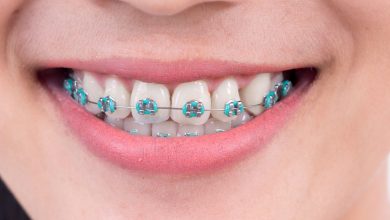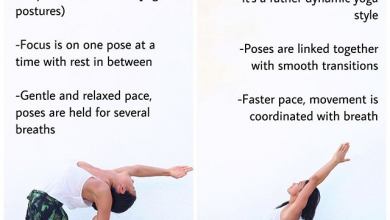
Canine eye health is paramount, and it’s essential to recognize the signs of trouble. Unfortunately, many common problems in dogs can cause visual impairment or blindness. These include cataracts, retinal disease, glaucoma, and chronic keratoconjunctivitis sicca (KCS). In this article, we’ll cover KCS and how it affects dogs’ vision and eyesight over time.
Understanding Chronic Keratoconjunctivitis Sicca
Chronic keratoconjunctivitis sicca is a disease that affects the eyes and tear glands. Keratoconjunctivitis sicca (KCS) is a very common eye disease among dogs. According to DVM360, it has an incidence rate of 1.5% in dogs in North America.
The symptoms are typically similar to those of other eye conditions, such as dry eye syndrome:
- Dryness on the surface of your dog’s cornea. This may cause squinting or rubbing at his/her eyes with paws or feet.
- Dryness inside the nose due to lack of moisture from tears produced by your pup’s lacrimal glands. This can lead to sneezing and difficulty breathing through his/her nose while sleeping. This happens because they cannot open their nostrils wide enough due to swelling from inflammation caused by irritation.
- As stated by acvo.org, you can also find excess mucus production and redness in the eyes. The mucus can be white, green, gray, or yellow. Cloudiness can also occur as a result.
Recognizing the Signs and Symptoms
Dry eye is a condition that affects the eyes of many dogs. It can cause pain, discomfort, and even infection if left untreated.
To check for signs of dry eyes:
- First, look at the inside corners of your dog’s eyelids. This is where you will see most of the tear ducts. If they appear red or inflamed, there’s likely an issue with tear production.
- Next, gently pull down on one side of your pup’s lower lid so that only half the pupil is exposed. This will allow you to see how much moisture covers his/her cornea without having any other factors affecting visibility.
- Finally, try gently pressing down on both sides simultaneously with two fingers. If nothing comes out, something might be wrong with how often your dog blinks throughout normal daily activities.
Diagnosis and Veterinary Intervention
You can’t rely on your dog to tell you if something’s wrong with his vision. While some dogs show discomfort or pain, others may be less vocal. A thorough exam by a vet who specializes in canine eye care will help determine whether or not your dog has KCS. The following tests are common for diagnosing KCS:
- Slit lamp examination, which is a specialized microscope that allows the doctor to see the surface of the eye.
- Tonometry and fluorescein staining to rule out glaucoma as a cause of corneal ulcers. A study from BMC Veterinary Research shows how much pressure should be there during this test. The study concludes that the normal range’s pressure is 15—25 mmHg. If the result is anything less or more than this, the veterinarian will take some other tests to diagnose the problem.
Managing Canine Dry Eyes at Home
Since KCS is a common condition, it can also be easily managed at home. However, you should still visit a veterinarian to ensure your pet suffers from KCS and not any other condition.
You can start by using eye drops. These simple solutions for treating dry eyes require no additional equipment or expertise. You can administer them at home, and they’re often the first line of treatment for mild cases of canine dry eye.
You can also try eye rinses. These work similarly to eye drops but contain more powerful ingredients to penetrate your dog’s cornea. They typically come in two forms: one that you apply yourself before bedtime and another that your vet will administer during an appointment.
You can also use eye ointments after consulting with a veterinarian if nothing else works. According to PetRx, many ointments like the Optimmune Ophthalmic Ointment are made specifically for treating chronic keratoconjunctivitis sicca. You can find such ointments at a pet pharmacy store.
However, you can order online if you don’t want to go through the hassle of visiting multiple pet stores to get the ointment. Optimmune Ophthalmic Ointment is an FDA-approved ophthalmic product that can help ease the symptoms of KCS. You should consult with your veterinarian to confirm the administration of the ointment and further steps.
Lifestyle Adjustments for Dogs With Chronic Keratoconjunctivitis Sicca
Your dog’s eyes are sensitive, so taking care of them is important. Here are some tips for helping your pet adjust:
- Get your dog to rest as much as possible. The more active he is, the more likely he’ll be to rub his eyes and cause damage or infection.
- Use a humidifier in the house during winter when the air is especially dry. This will make it easier for him to breathe comfortably without having his nasal passages dried out by allergens. It will also help keep moisture in their eyes so they don’t become irritated by dryness. An article from Guide Dogs for the Blind states that an Air Quality Index of 101-150 can be unhealthy for dogs. It can also be problematic for dogs with heart issues and breathing problems.
- Avoid dry surfaces like hardwood floors and carpeting. These tend to make breathing difficult and exacerbate symptoms explicitly related to KCS. Instead, opt for soft surfaces like rugs, which retain moisture better than others.
Preventive Measures for Canine Eye Health
Having your dog’s eyes examined by a veterinarian at least once a year is important to help prevent eye problems. Your veterinarian will be able to detect any early signs of disease in the cornea and conjunctiva and check for signs of dry eye.
In addition to regular visits with the vet, there are some steps you can take at home to care for your dog’s eyes:
- Keep his or her face clean. Cleaning between their eyelashes with a soft cloth or cotton swab helps remove bacteria that may cause infection or irritation if left behind. You should also regularly clean around the outside corners of their eyes with water or saline solution diluted 50-50 with distilled water.
- Feed nutritious food containing omega fatty acids, vitamin A supplements, and lutein/zeaxanthin antioxidants. These nutrients help keep tissue healthy while preventing further damage.
- Protect your dog’s eyes from potential irritants like dust, pollen, and chemicals. If your dog is exposed to these, rinse their eyes with an eyewash recommended by your veterinarian.
- Regular exercise helps maintain overall health, including proper circulation to the eyes. Physical activity can also reduce the risk of obesity-related conditions affecting eye health.
- Protect your dog from excessive sun exposure, which can lead to conditions like cataracts. If your dog is outdoors, make sure they have access to shade.
In summary, the best thing you can do for your dog is to keep an eye on his eyes. If you see any signs of irritation or infection, bring him in for an exam as soon as possible. Knowing what lifestyle changes may help with dry eye syndrome is important so that humans and dogs have happy, healthy eyes.





